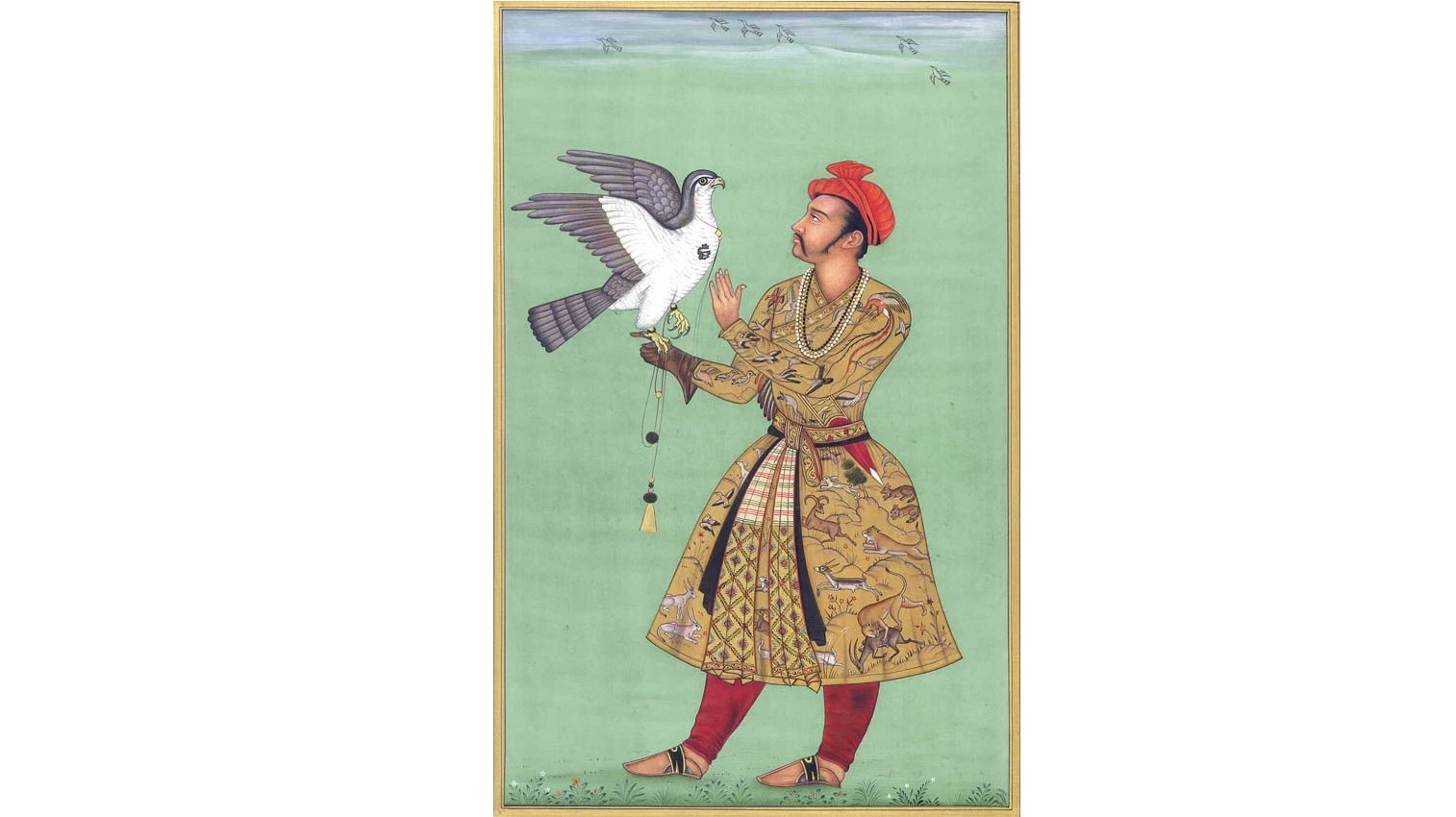Important Facts For Prelims
Mughal Miniature Painting
- 03 Nov 2025
- 6 min read
Why in News?
A Mughal miniature painting, A Family of Cheetahs in a Rocky Landscape attributed to Basawan (c. 1575–80), has set a world record by selling for £10.2 million (~$13.6 million) at a Christie’s auction in London.
- Created under Emperor Akbar’s reign (1556–1605), the painting, rendered in opaque pigments with gold highlights, captures realism and depth through its finely detailed depiction of fur and landscape.
What are the Key Facts Regarding the Mughal Paintings?
- Origin: The Mughal School of Painting, developed in the 16th century, was a miniature art form blending Persian and Indian styles.
- It was primarily used for manuscript illustrations and album art, becoming a hallmark of Mughal artistic excellence.
- Evolution:
- Babur (1526–1530): No major contribution to painting due to his short reign and focus on conquest.
- Humayun (1530–1540, 1555–1556): After his exile at Shah Tahmasp’s court in Persia, Humayun introduced Persian influences to India and brought master artists Mir Syed Ali and Khwaja Abdus Samad.
- The painting Princes of the House of Timur (c.1550) is a notable example from this period.
- Akbar (1556–1605): He was the true founder of Mughal painting, who established the Imperial Atelier and blended Persian techniques with Indian themes and naturalism.
- Prominent artists: Basawan, Daswanth, Lal, Miskin, Kesu Das.
- He introduced an Indian colour palette (like peacock blue and Indian red) with realistic human expressions, while European influences from Jesuit missionaries added perspective and shading.
- Jahangir (1605–1627): Mughal painting peaked under Jahangir’s supervision, shifting focus from narrative scenes to portraits, nature studies, and album art.
- Key themes: portraits, birds, flowers, animals, and nature studies.
- Prominent artists: Ustad Mansur (known for Red Blossoms painting), Abu’l Hasan, Bichitr.
- Shah Jahan (1628–1658): He maintained patronage but introduced less innovation, making the style more ornamental and formal, with paintings focusing on court scenes, music, and romance, and greater use of gold and decorative motifs.
- Aurangzeb (1658–1707): He showed little interest in painting, viewing it as un-Islamic, leading to a decline in imperial patronage.
- Many artists moved to Rajput and Deccan courts which later survived in provincial ateliers like Bikaner, Hyderabad, and Lucknow.
- Later Mughals (18th Century): Under Muhammad Shah Rangeela (1719–1748), art briefly revived with romantic and leisure themes, but by Shah Alam II’s reign, Mughal painting declined, giving way to Rajput and Company styles.
- Legacy and Impact: Mughal painting evolved into a distinct classical Indian style, influencing Rajput (Bikaner, Bundi, Kishangarh) and Deccan–Company schools in the 18th–19th centuries.
- It sustained a courtly art tradition beyond the empire and laid the foundation for scientific naturalism in Indian art, seen in Jahangir’s nature studies.
Frequently Asked Questions (FAQs)
1. What is the significance of Basawan’s cheetah miniature?
The work (c. 1575–80) is attributed to Basawan, a leading artist in Akbar’s atelier, and is considered one of the earliest natural-history studies in Mughal painting.
2. Who were the leading painters in Akbar’s court?
Prominent artists included Basawan, Daswanth, Lal, Miskin, and Kesu Das, who illustrated major manuscripts like the Hamzanama and Akbarnama.
3. What artistic features distinguish Mughal miniatures under Jahangir?
Jahangir’s period emphasised fine brushwork, natural studies (birds, animals, flowers), portraiture, and refined single-point perspective, marking the peak of Mughal naturalism and individual portrait art.
UPSC Previous Years Questions
Prelims
Q. The painting of Bodhisattva Padmapani is one of the most famous and oft-illustrated paintings at (2017)
(a) Ajanta
(b) Badami
(c) Bagh
(d) Ellora
Ans: (a)
Q. With reference to the Indian history of art and culture, consider the following pairs: (2014)
|
Famous work of sculpture |
Site |
|
1. A grand image of Buddha’s Mahaparinirvana with numerous celestial musicians above and the sorrowful figures of his followers below |
Ajanta |
|
2. A huge image of Varaha Avatar (boarincarnation) of Vishnu, as he rescues Goddess Earth from the deep and chaotic waters, sculpted on rock |
Mount Abu |
|
3. “Arjuna’s Penance”/ “Descent of Ganga” sculpated on the surface of huge boulders |
Mamallapuram |
Which of the pairs given above is/are correctly matched?
(a) 1 and 2 only
(b) 3 only
(c) 1 and 3 only
(d) 1, 2 and 3
Ans: (c)
Q. Consider the following historical places: (2013)
- Ajanta Caves
- Lepakshi Temple
- Sanchi Stupa
Which of the above places is/are also known for mural paintings?
(a) 1 only
(b) 1 and 2 only
(c) 1, 2 and 3
(d) None
Ans: (b)







